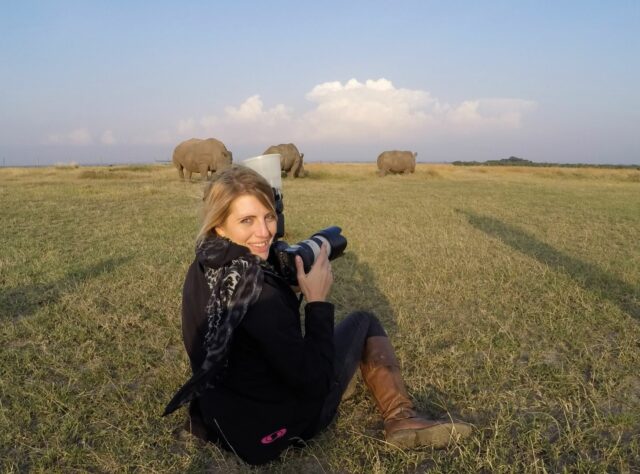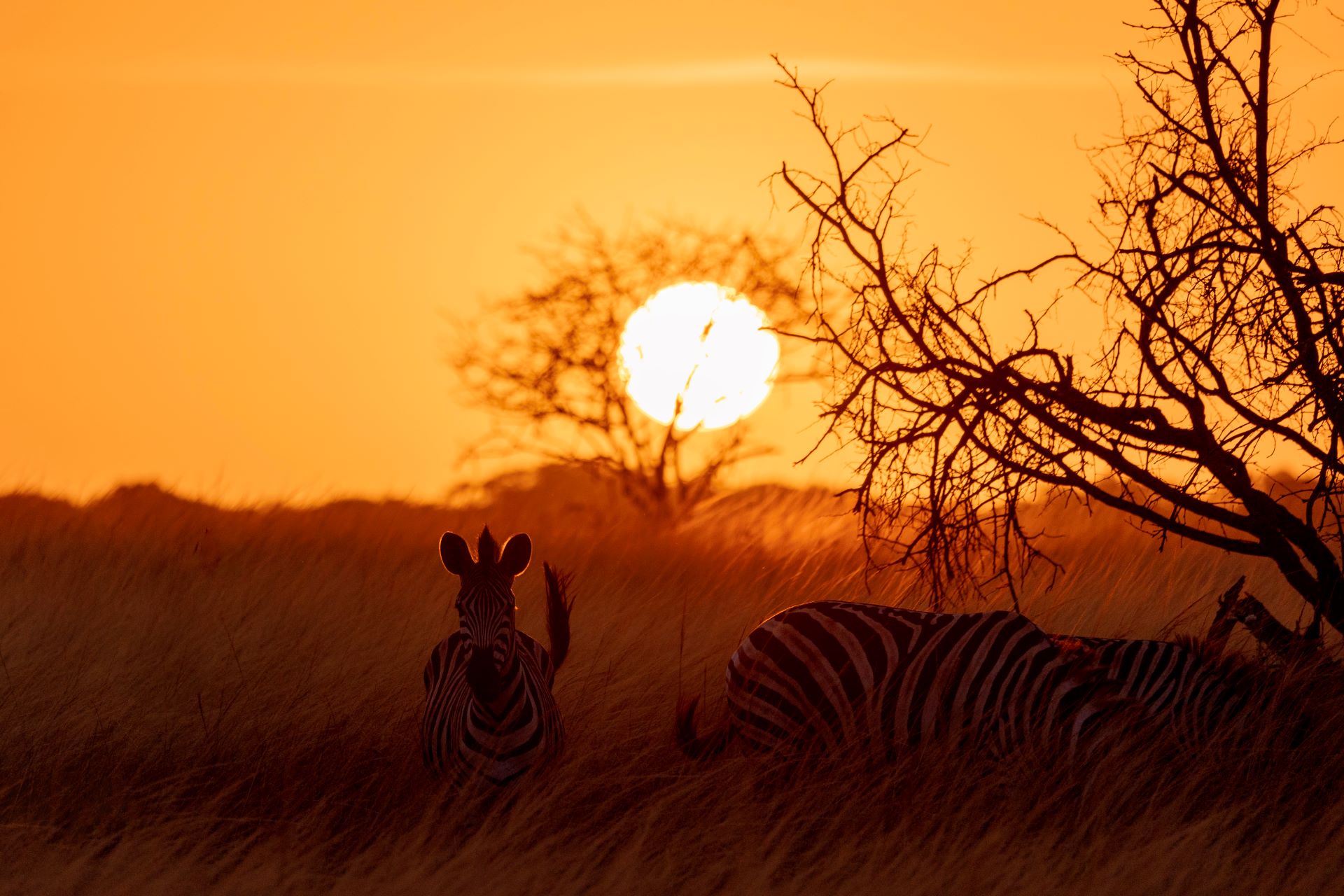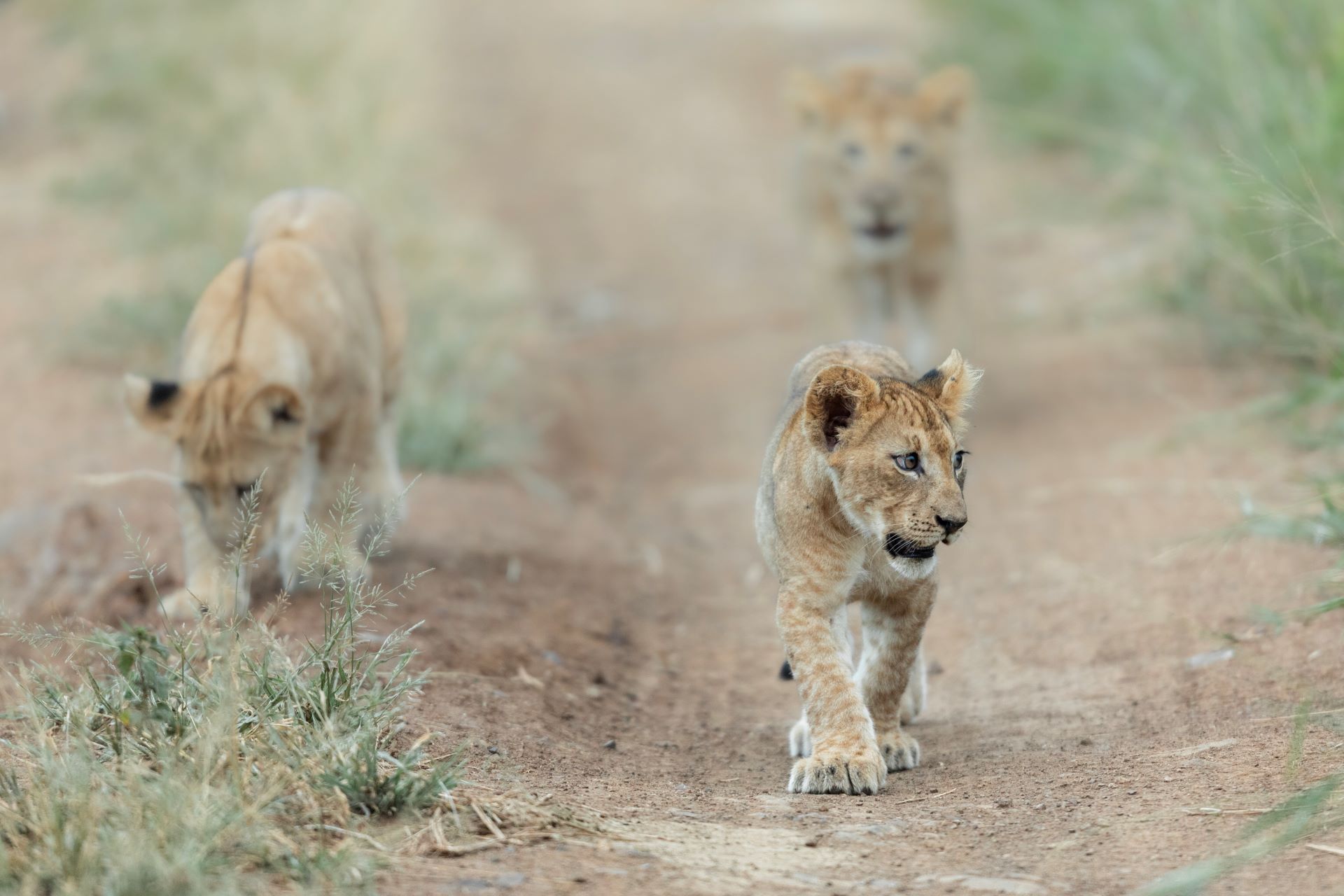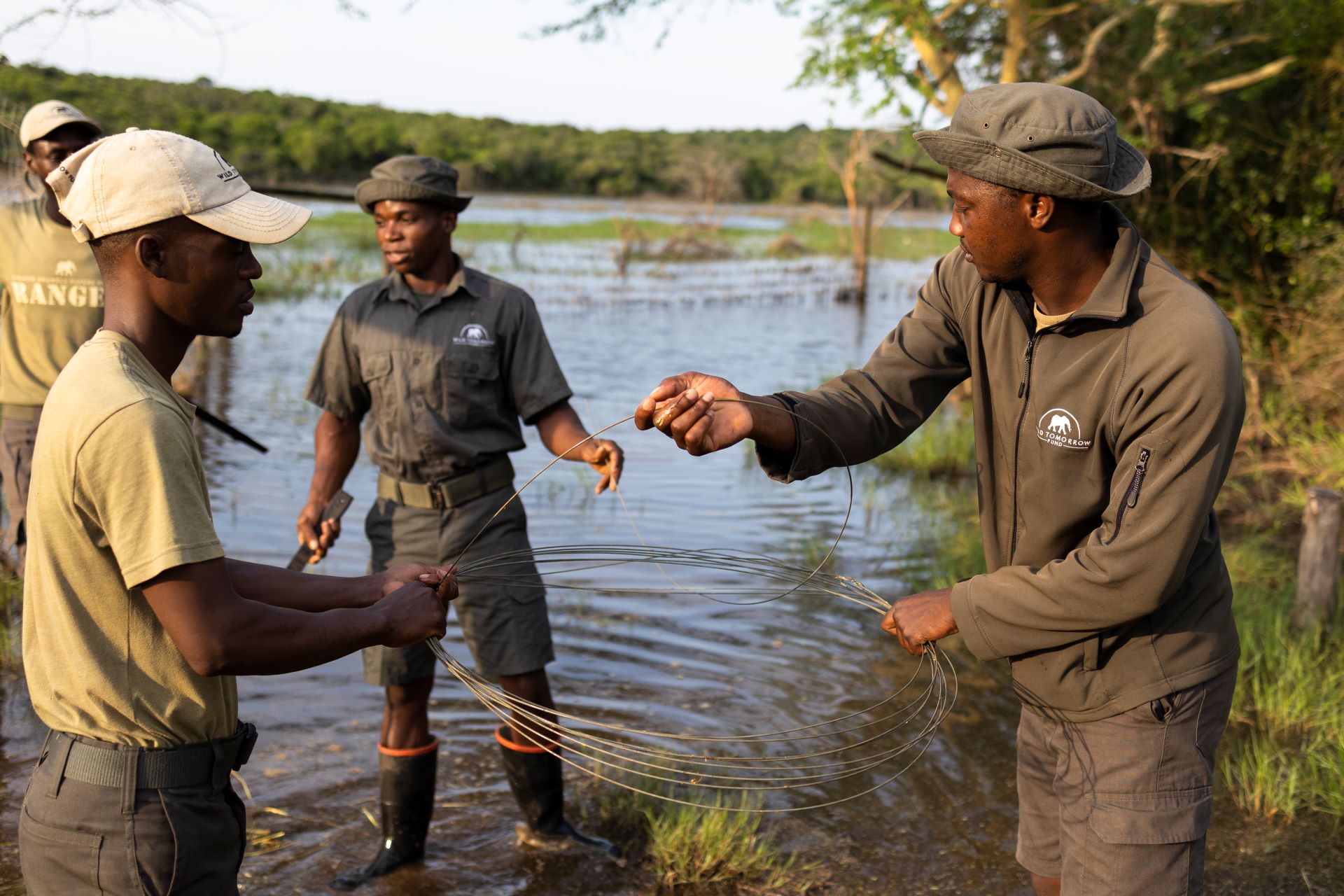
Chantelle Melzer photographing the last two Northern White Rhinos with a Southern White Rhino in Ol Pejeta Conservancy, Kenya. Credit: Shane Raw
Chantelle Melzer is an award-winning wildlife photographer and videographer who specialises in creating emotive images of the natural world, both in her homeland of South Africa and abroad. With a deep-rooted passion for nature and art, we were delighted to have her support capturing the images and videos for this year’s Spring appeal, Connecting Ukuwela, in support of our fantastic partner Wild Tomorrow.
In this interview, we caught up with Chantelle to get a behind-the-scenes insight into her photographic process: how she planned her shoots, the skills needed to be a wildlife photographer, and her personal highlights while photographing for the appeal. She also reflected on the broader role that wildlife photography can play in conservation.
WLT: How did you decide what to photograph for this appeal?
Chantelle: I have worked on a variety of projects for Wild Tomorrow (WT) over the last two or three years, so with all the content collected for them during that time I had already built up a decent library of images to refer to. However, I did feel that there were several key elements missing that were needed to tell this campaign’s full story. Wild Tomorrow has reintroduced several species onto the Greater Ukuwela Nature Reserve over the past few years; however, there are still several which are not yet present and form a crucial part of the greater story of connecting the reserve up fully and thereby expanding the available range. This content needed to be collected on our neighbouring reserves.
I generally tried to plan shoots as best I could around predicted weather conditions, as this can affect animal behaviour and the quality of sightings as well as the footage captured. Lighting and the time of day is also always an important factor to consider, so most shoots tended to start between 4:00am and 4:30am, as is normal for the summer months – this makes a good cup of coffee a very welcome companion. I then created a shot list based on what we needed and we headed out to see what we could get. At the end of the day, you never know what you will find – some days are simply more successful than others but, as a general rule, time and patience (and a good dose of luck) are key.

Early morning magic. Credit: Chantelle Melzer
WLT: What were your highlights from photographing for this appeal?
Chantelle: There were actually a few moments that stood out as highlights but the one that eclipses the rest was getting my first shot of an African Leopard in KwaZulu-Natal. The reason this was so special is that despite the fact that I have seen and photographed Leopards many times in a variety of different game reserves and countries, including some in places where they are not often seen, I had never had that opportunity in my home province. To finally see and photograph a Leopard in KwaZulu-Natal was therefore something really amazing.
Another very interesting sighting we had while filming for the campaign was witnessing Cheetah attempting to hunt a Plains Zebra foal within a herd which is something I’ve never seen before. They actually made three attempts before finally giving up – I think they were being a bit over-ambitious.

A special moment: Chantelle’s first sighting of an African Leopard in KwaZulu-Natal. Credit: Chantelle Melzer
WLT: What skills do you use to get the best shots and footage?
Chantelle: I have always had a keen interest in animal behaviour and I find that observing behaviour patterns can be very useful when it comes to photographing and filming wildlife. By watching how an animal walks, where it walks, as well as observing other external environmental factors, you can often pre-determine its path or “what it might do next”. Even if you lose sight of it, you can sometimes calculate more or less where it might appear again. Of course, nothing is guaranteed, and it does not always work but when it does work – this is probably where I end up getting the best shots because it puts me “ahead” of the animal rather than chasing to keep up.
Another important aspect in observing behaviour is recognising an animal’s comfort zone. Ideally, you want to place yourself in a position that is far enough away to observe the animal’s natural behaviour and to try to not have any influence on this. Every individual (not just species) behaves differently in this regard so it’s important to observe their behaviour and approach accordingly. Paying attention to the surrounding environment as well as lighting conditions also plays a huge role in achieving a desired look or style.
Lastly, patience might not ordinarily be considered a skill but it is extremely important to observe and allow a story to unfold, which can take several hours, rather than rushing from one subject onto the next.

How an animal walks and where it walks can tell us what will happen next. Credit: Chantelle Melzer
WLT: What role do you think wildlife photography has in conservation?
Chantelle: Wildlife photography can be a powerful tool to tell stories about animal behaviour, wildlife conservation, and habitat transformations. Preparing footage for this campaign, I looked back at images in my archives from my first shoots for WT and I was blown away by the transformation and what they have accomplished. With each visit I tend to notice more; a large part of which has been due to habitat restoration consisting of bush clearing and the removal of alien vegetation, which opens up areas beneath the forest canopies for native plants and animals to return. In this sense, it can be a powerful tool to show how things used to be and how they are now.
Photography can also be used to highlight the beauty of a particular subject, its importance and ecological role, and why it needs to be protected. There is also significance in showing the opposite, demonstrating negative impact, where something that used to be beautiful has been completely destroyed, ultimately highlighting the importance of protecting what is left, or restoring (effectively attempting to reverse) the damage that has been done.
Both positive and negative visuals can have a great impact on people’s awareness, understanding, and emotions, and can trigger the desire to get more involved to try and help make a positive change. Ultimately, photography and videography can help people feel a deeper connection to nature, which will hopefully spark a desire to want to protect it.

Photographs provide a powerful document of how a habitat changes through time. Sisonke: the last missing piece of the Ukuwela puzzle. Credit: Chantelle Melzer
WLT: How do you feel reflecting back on your journey into wildlife photography?
Chantelle: I have always had a love for nature and even when I was young I wanted to find ways that I could use my skills to benefit nature conservation. So now to be involved in telling these incredible conservation stories is a dream come true. It has been a long road and I am very grateful to now be working with such amazing people. Seeing the positive impact they are making is truly inspiring and very motivating.

Change in the making: WT’s rangers removing snares from the Greater Ukuwela Nature Reserve. Credit: Chantelle Melzer
We were very grateful to have Chantelle’s support capturing some truly stunning images and videos for our Connecting Ukuwela appeal. To see more of Chantelle’s incredible imagery, take a look at our socials and past appeal news stories.
With your generous donations through this appeal, our partner, Wild Tomorrow, can now connect and expand their Greater Ukuwela Nature Reserve: providing habitat and space for iconic species such as Cheetah (Acinonyx jubatus), Elephants (Loxodonta africana), and Black Rhino (Diceros bicornis). A huge thank you to all our wonderful supporters for your help throughout this campaign.
